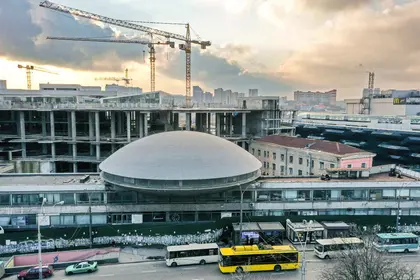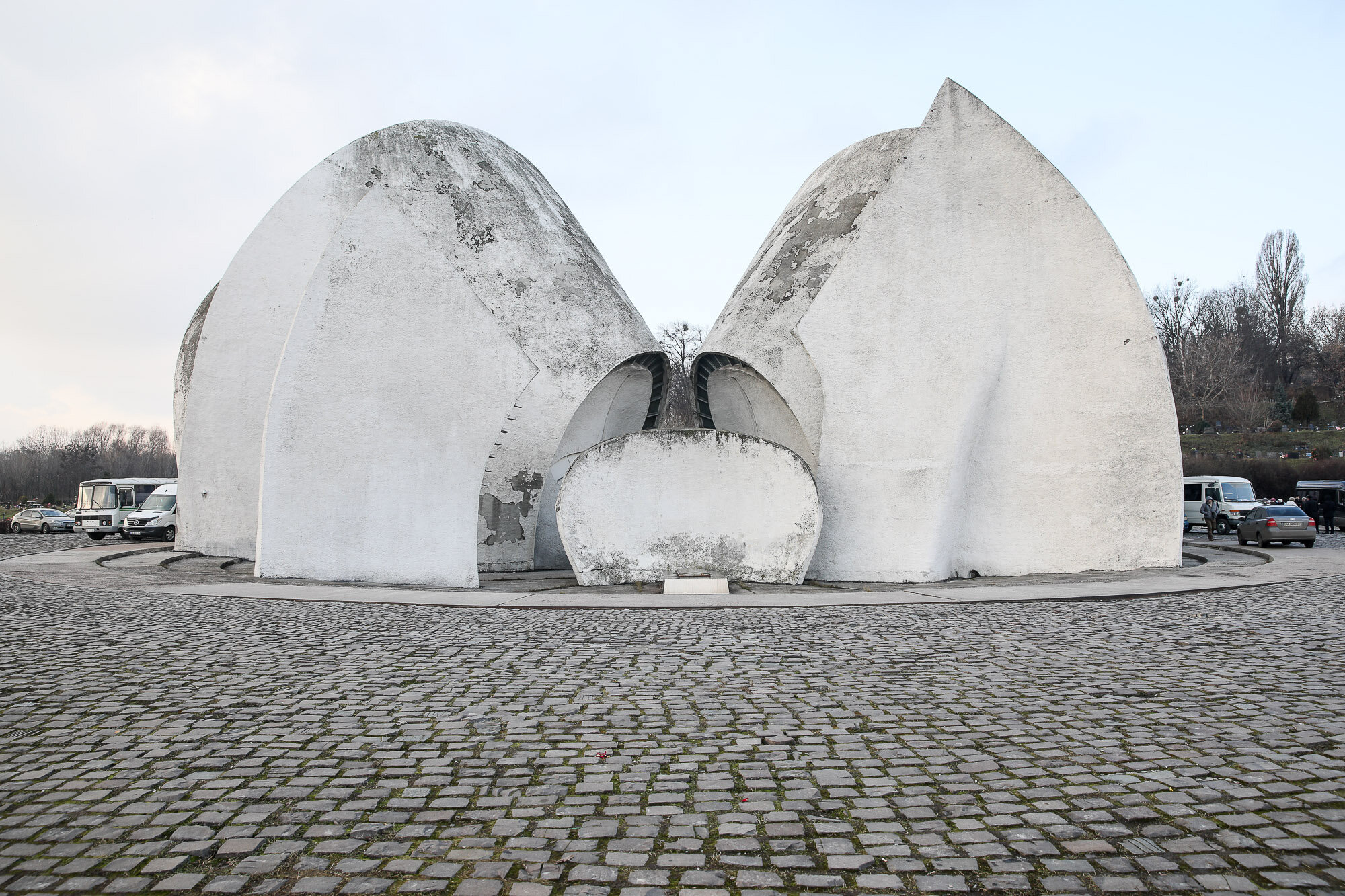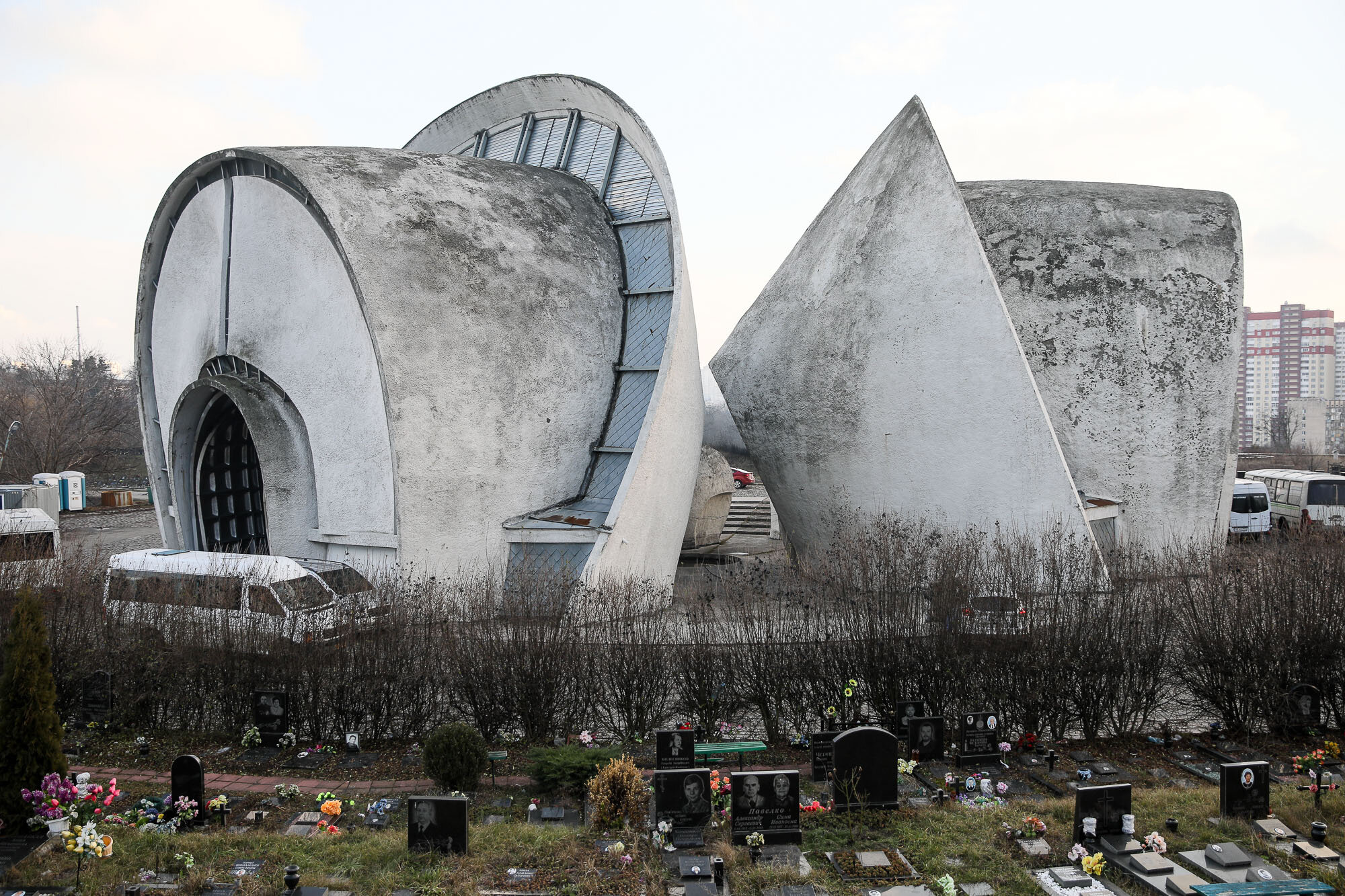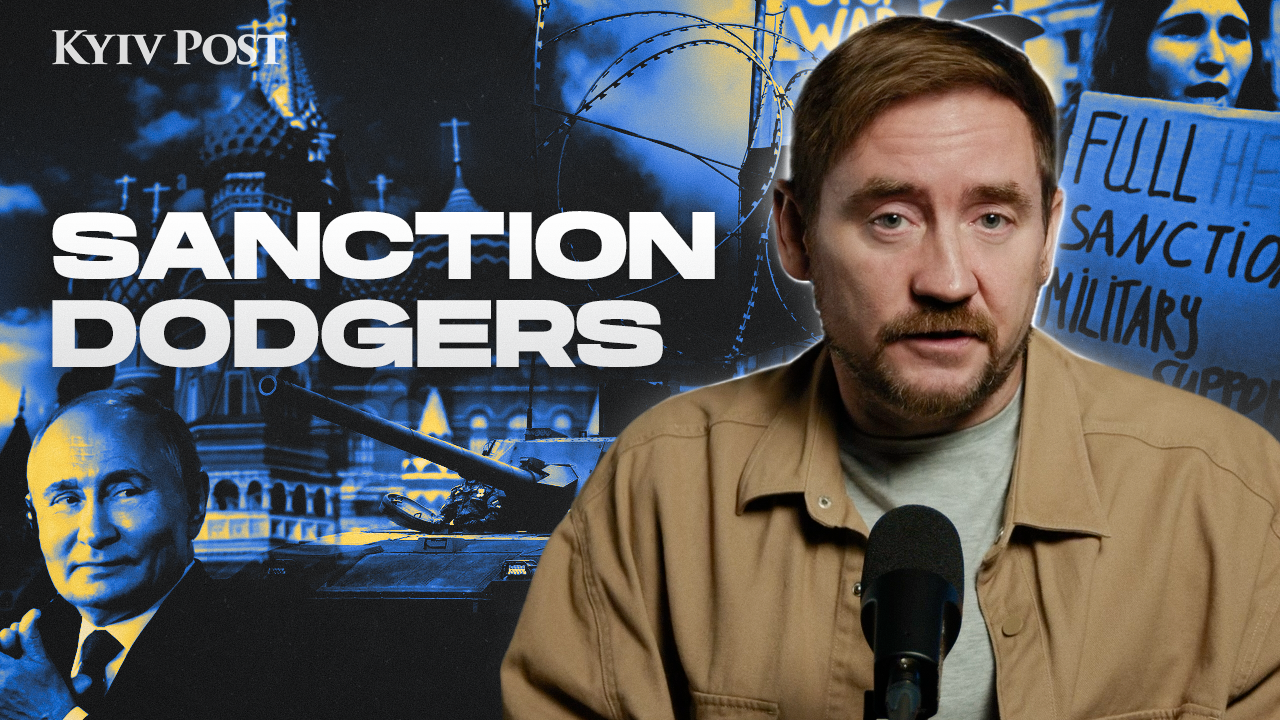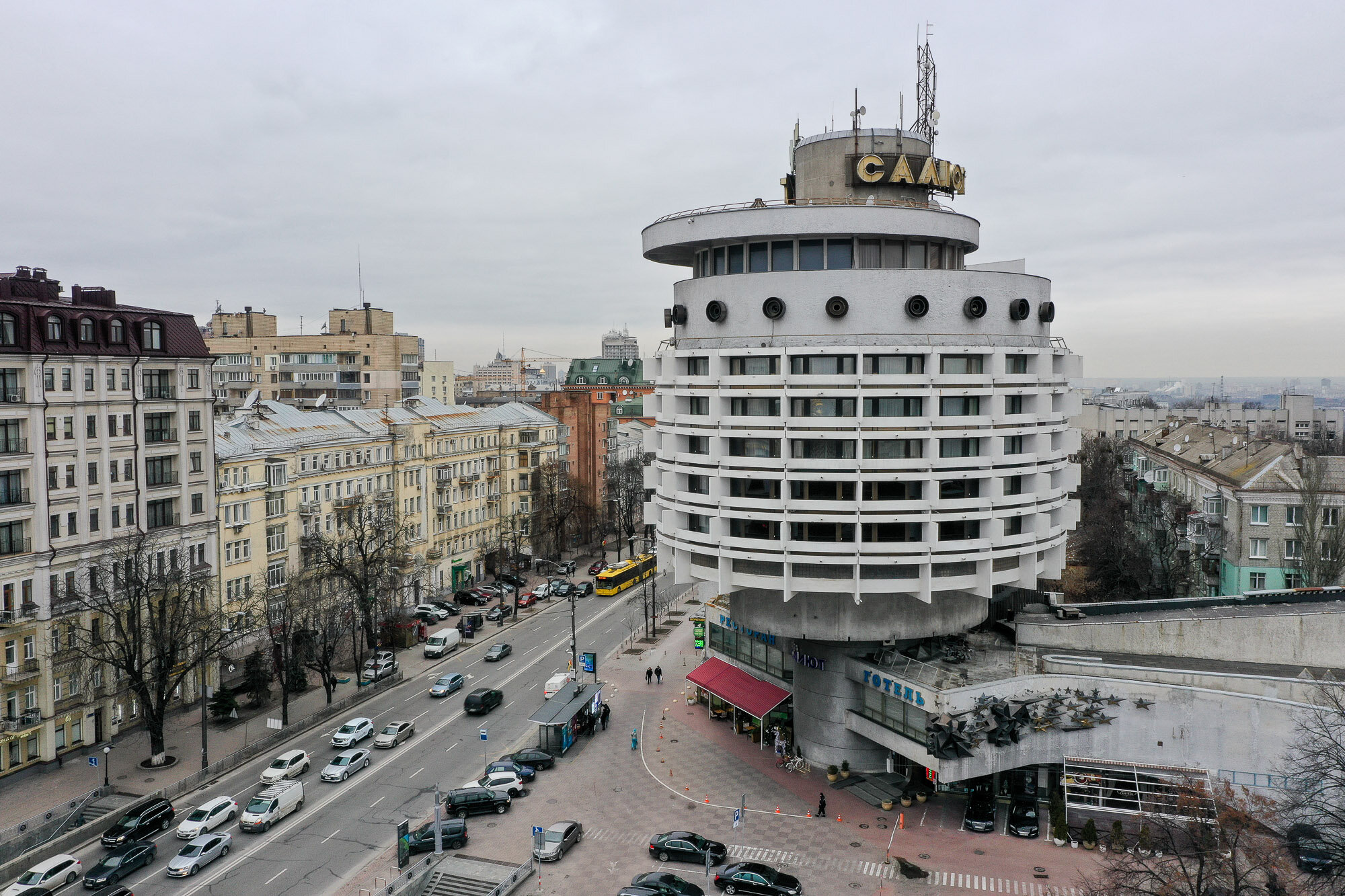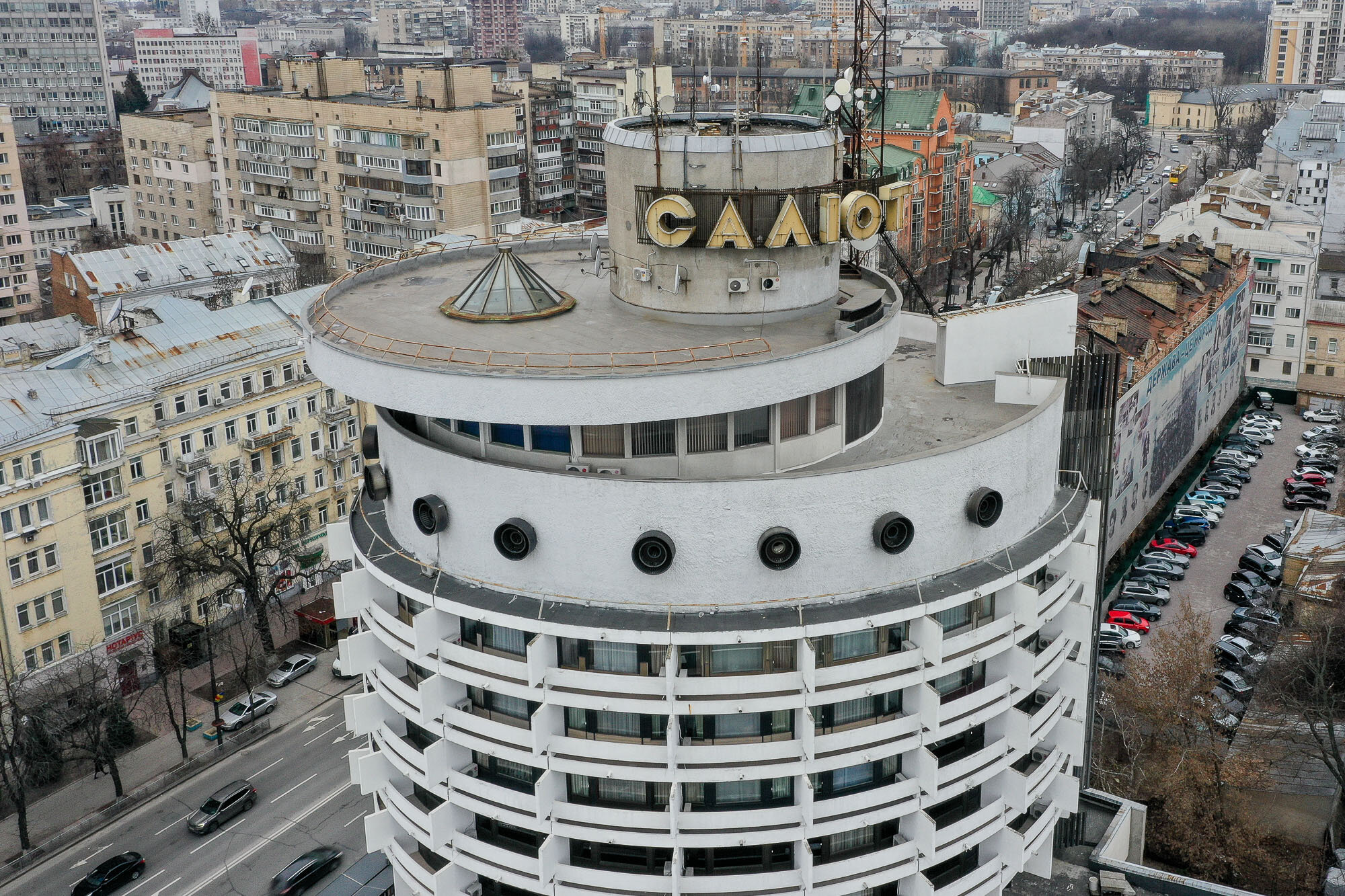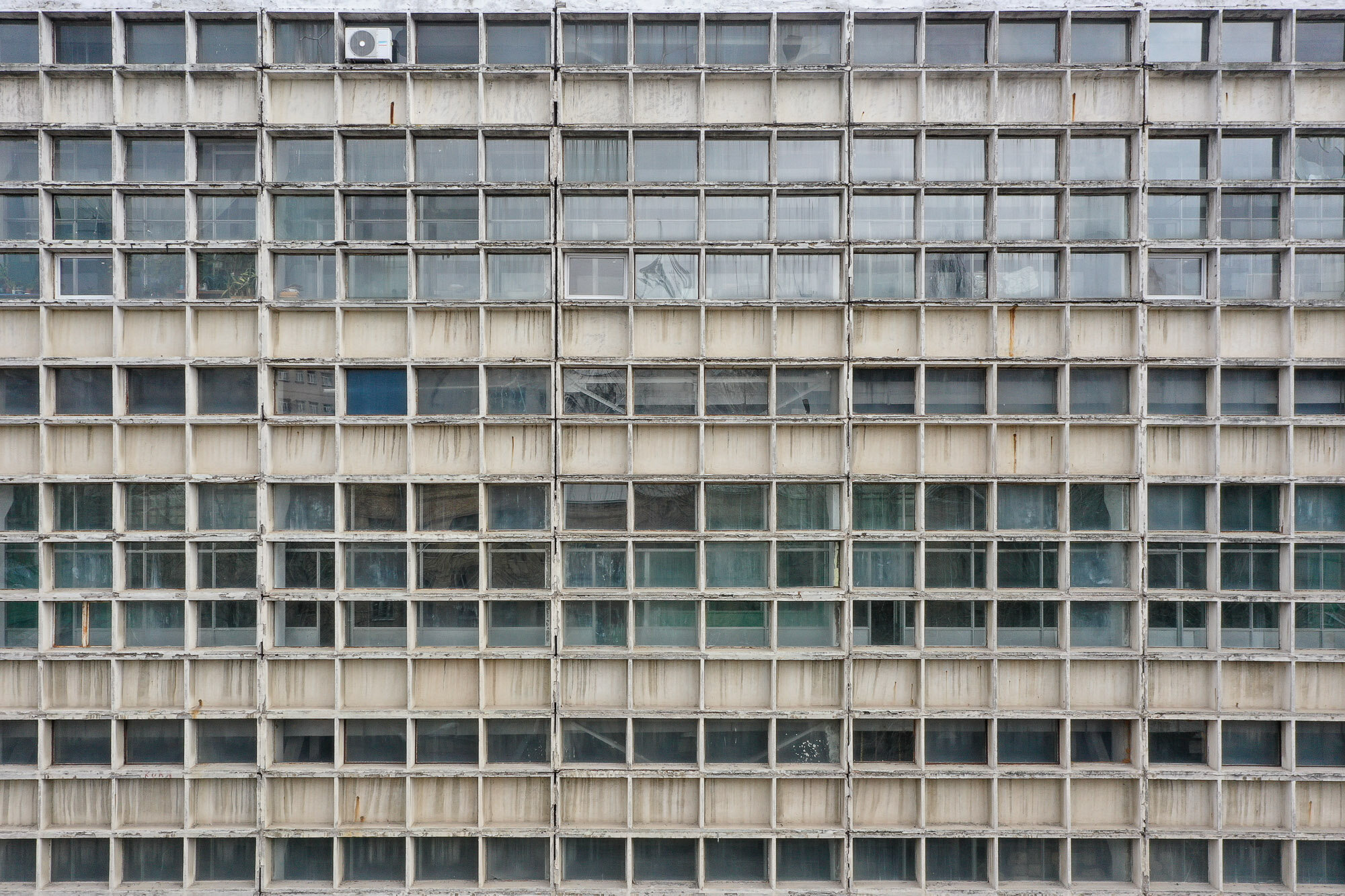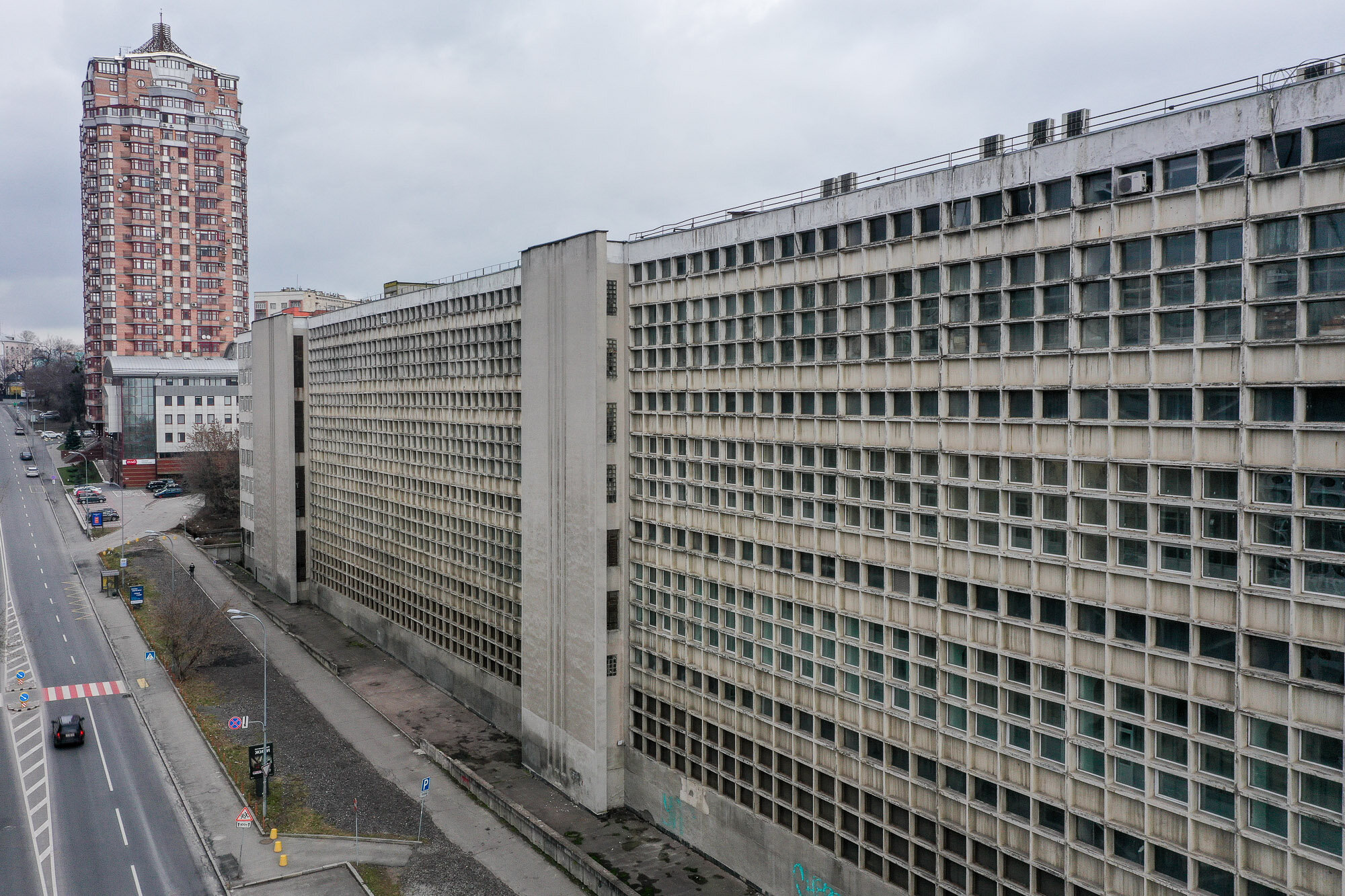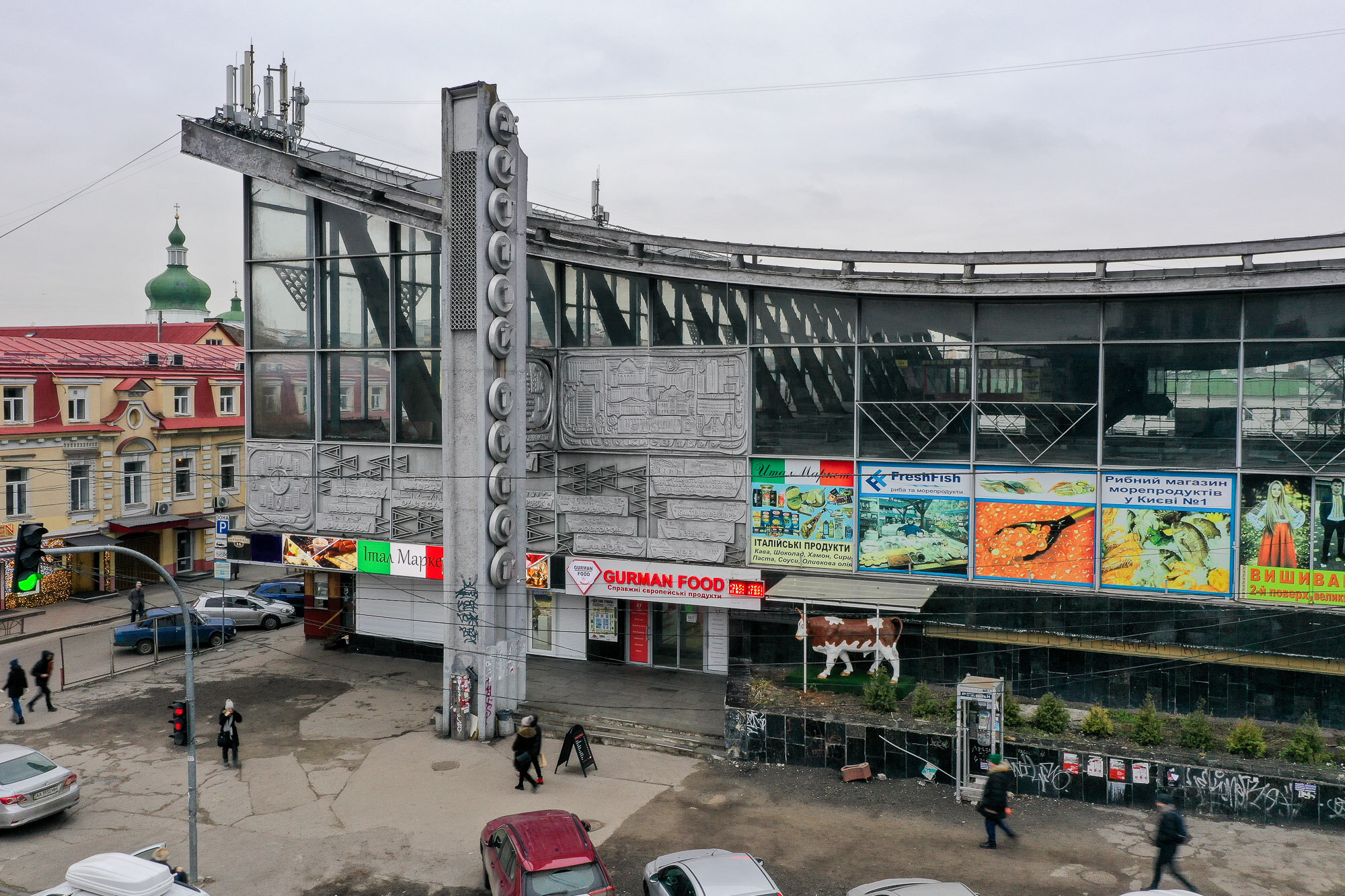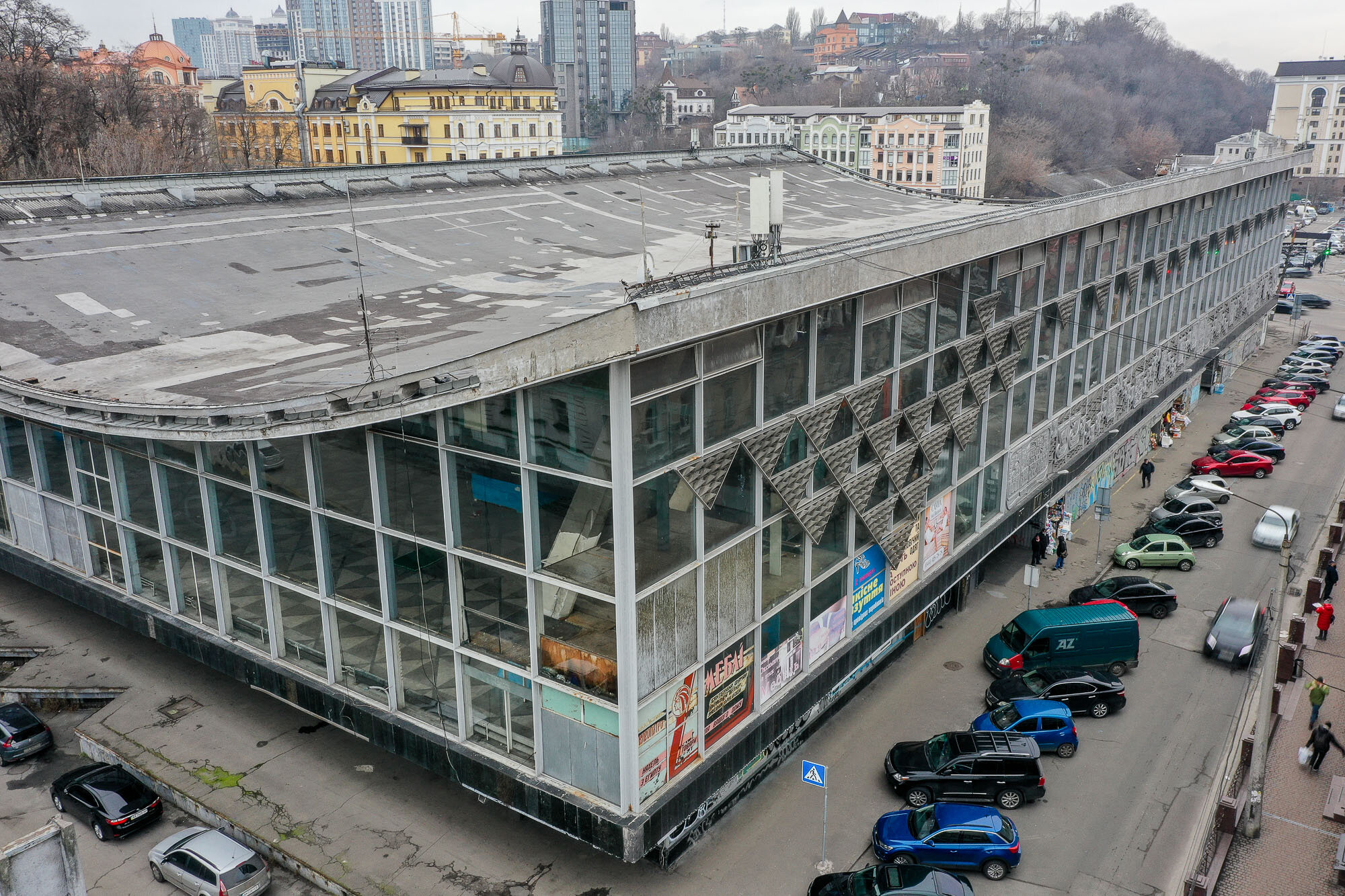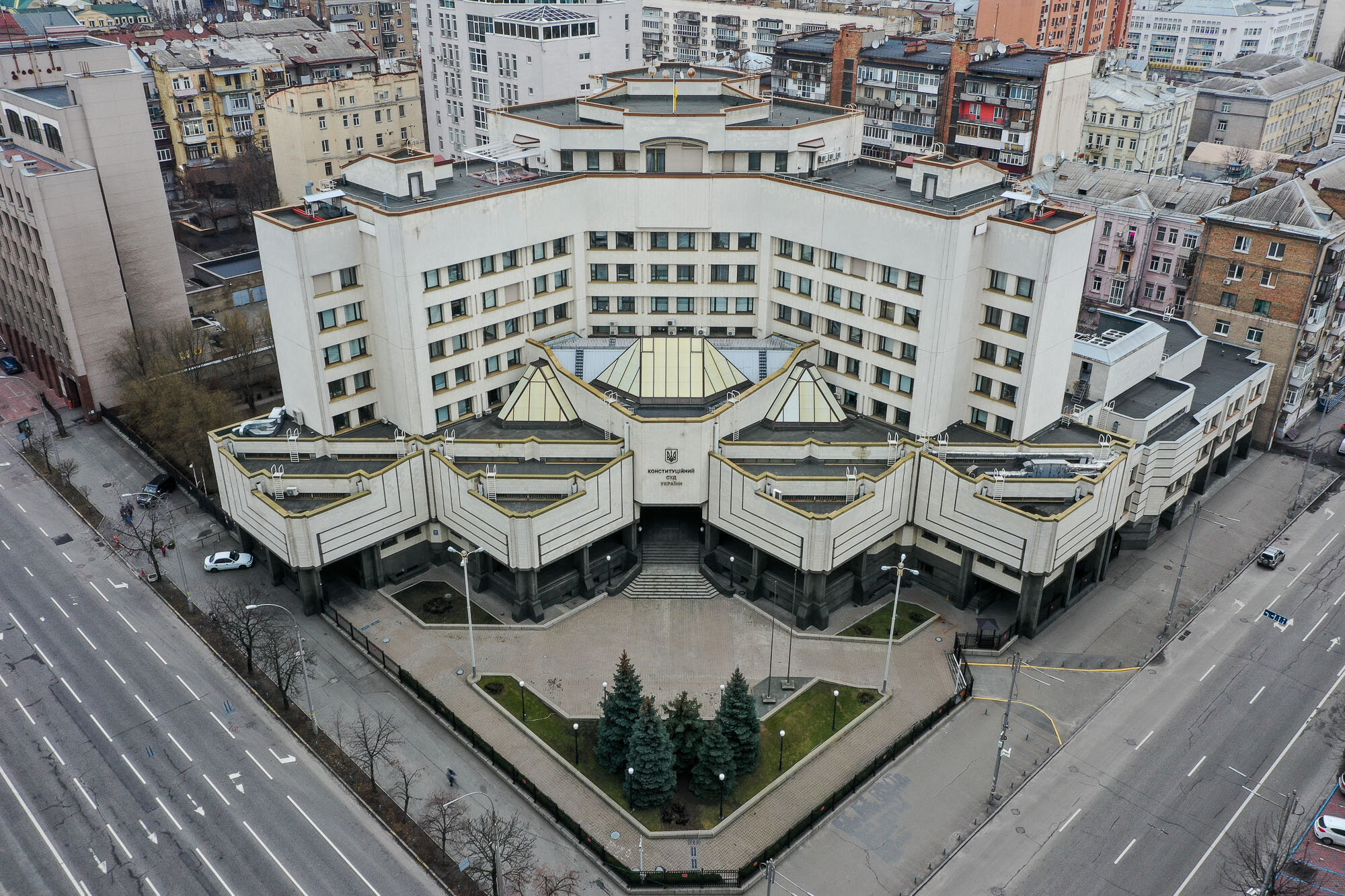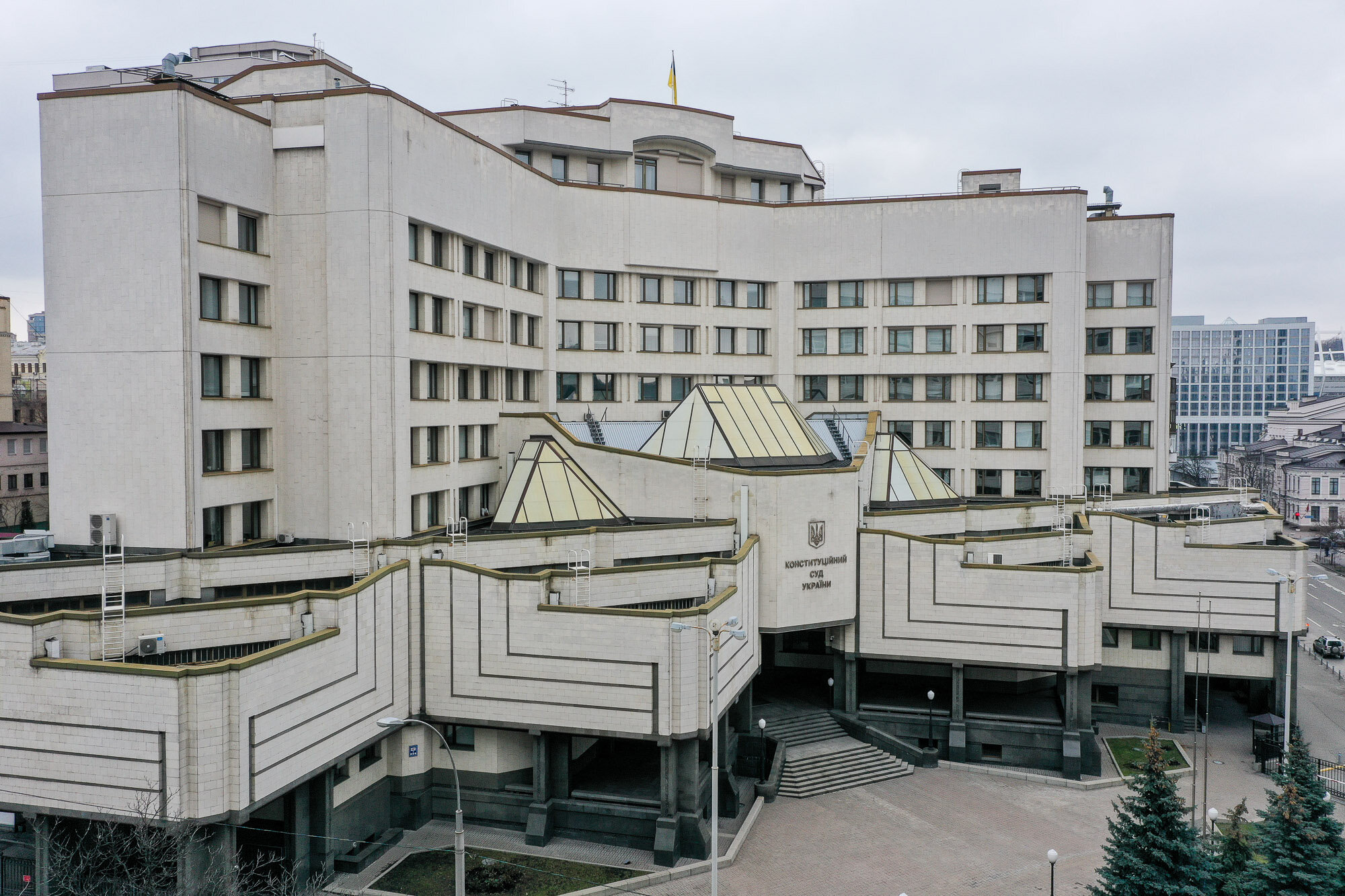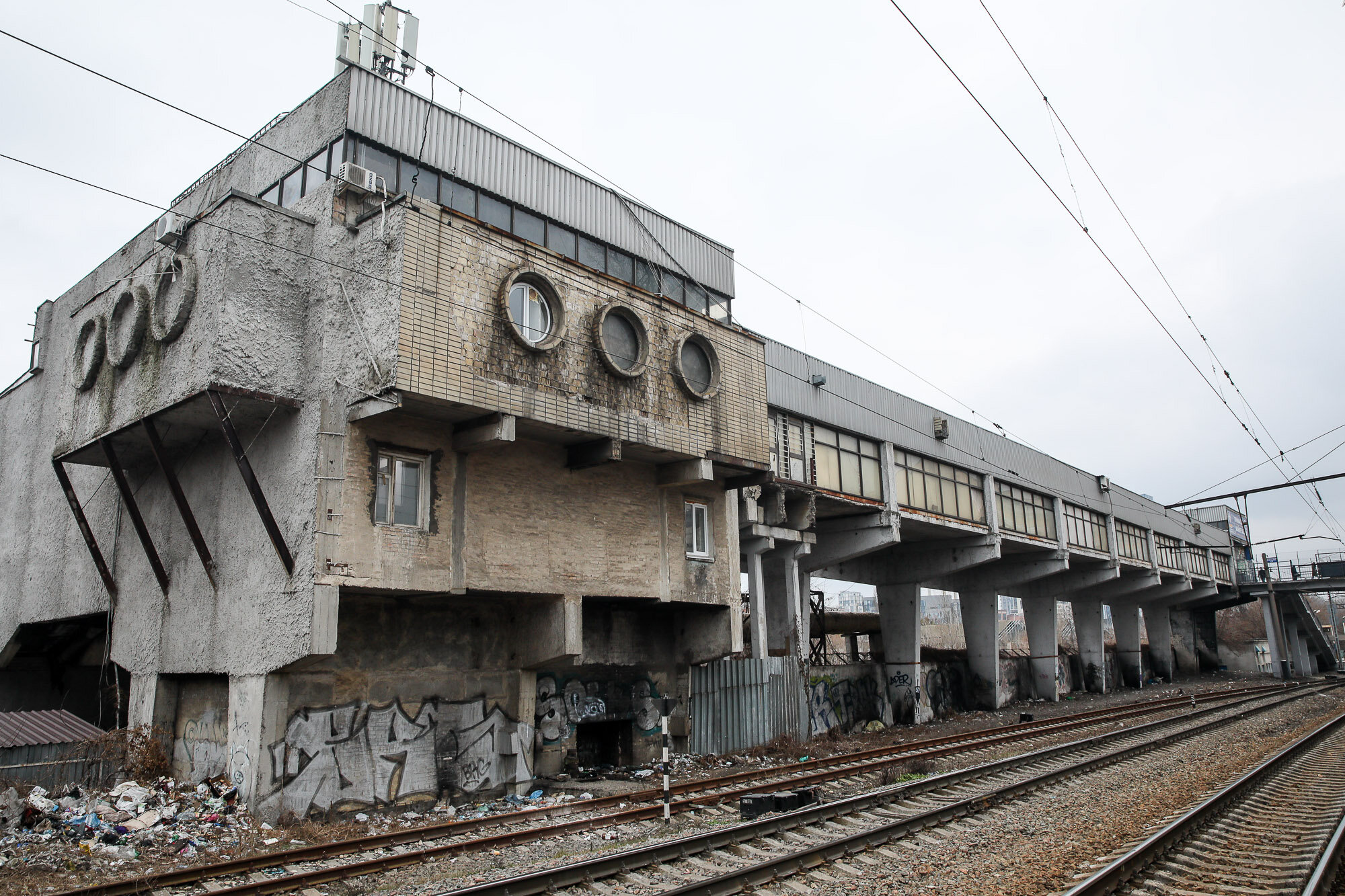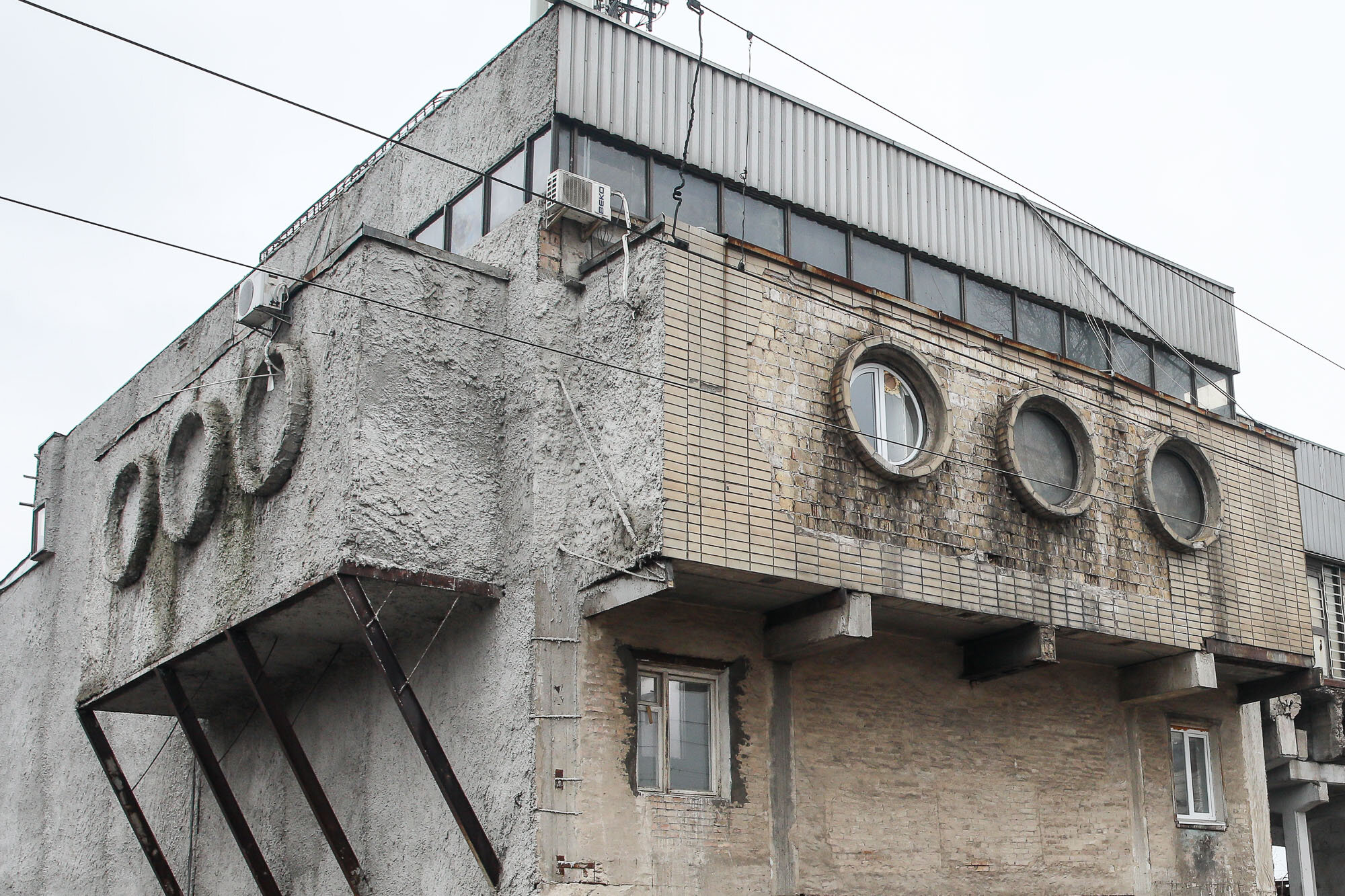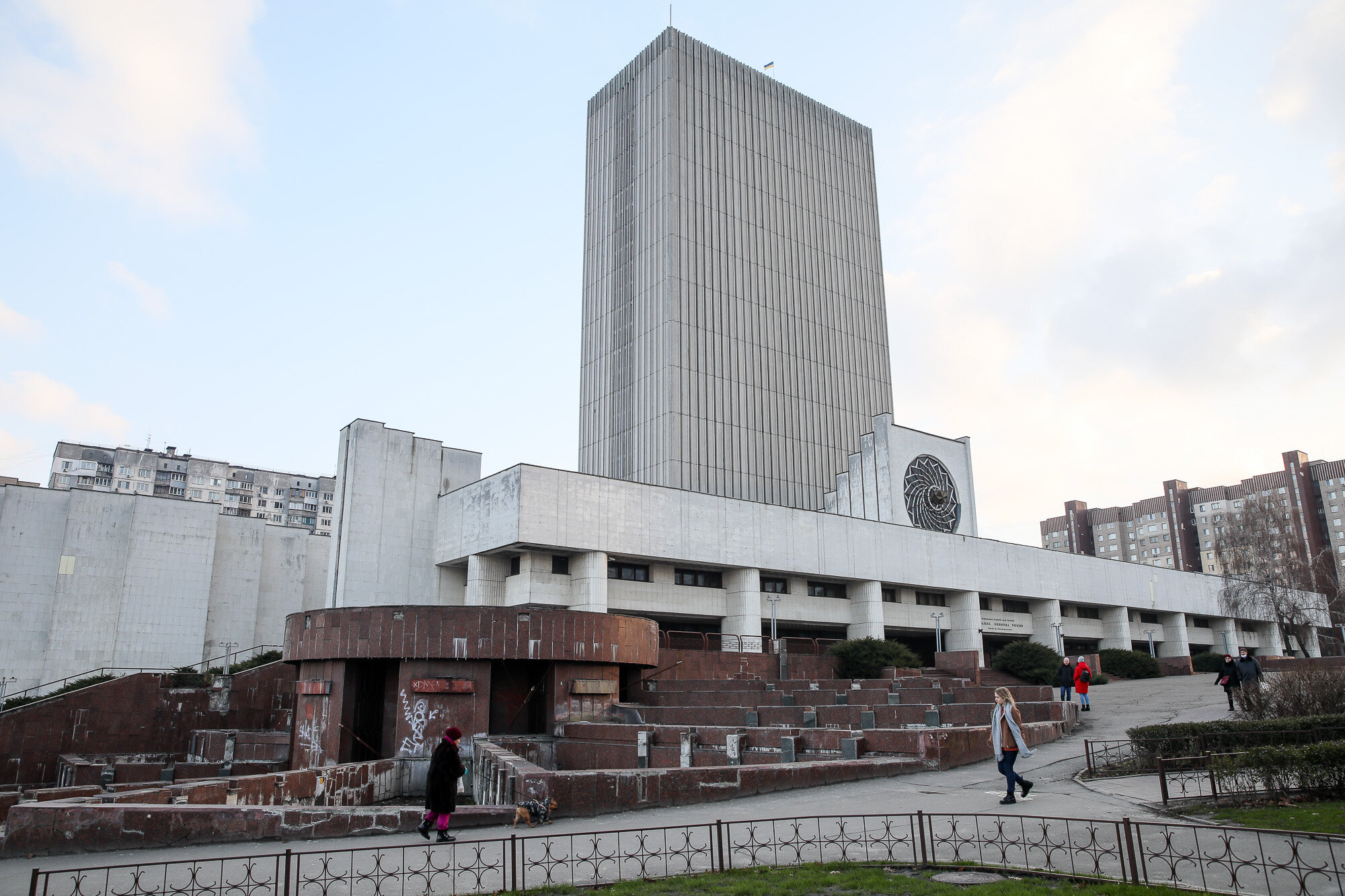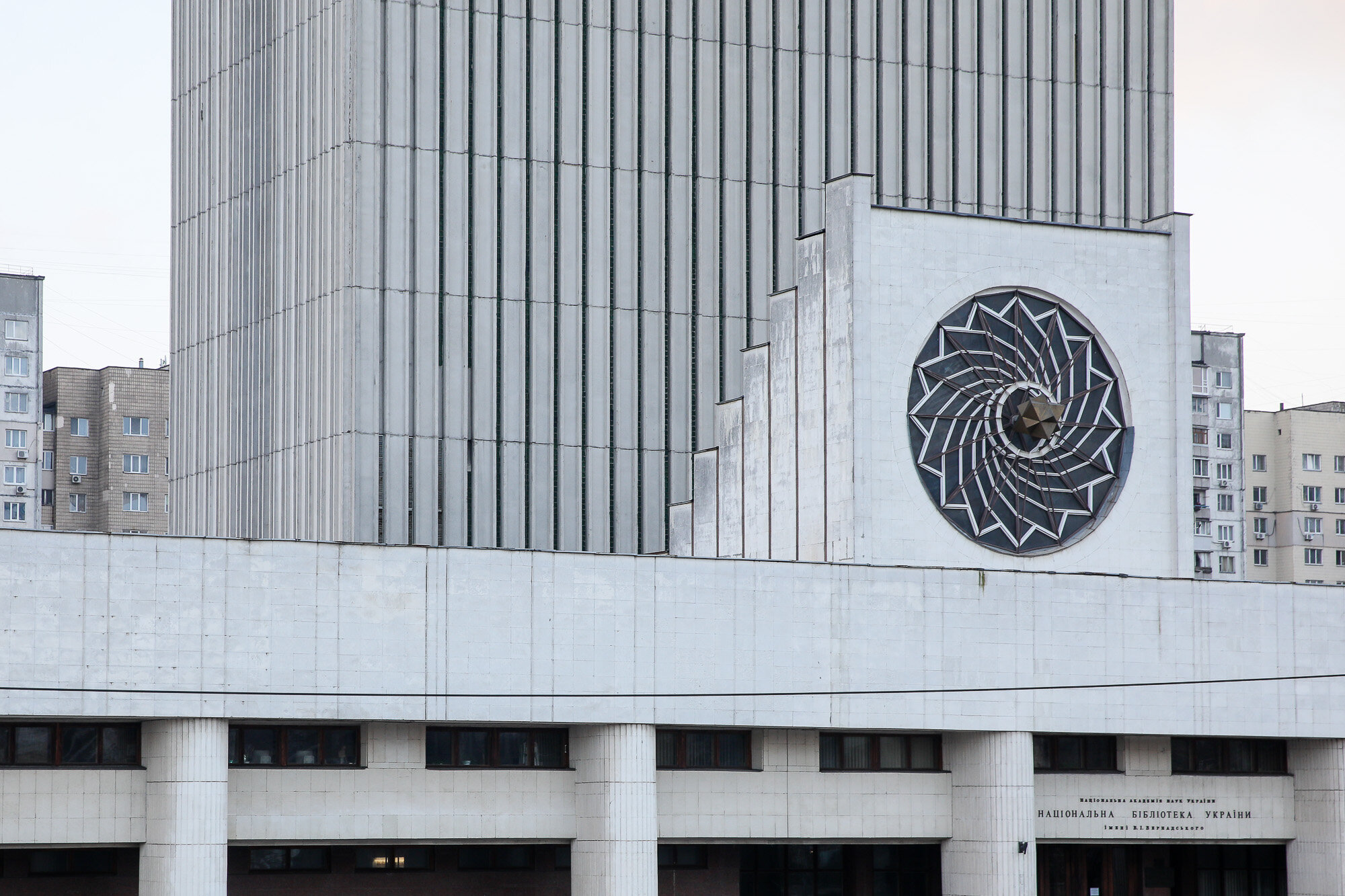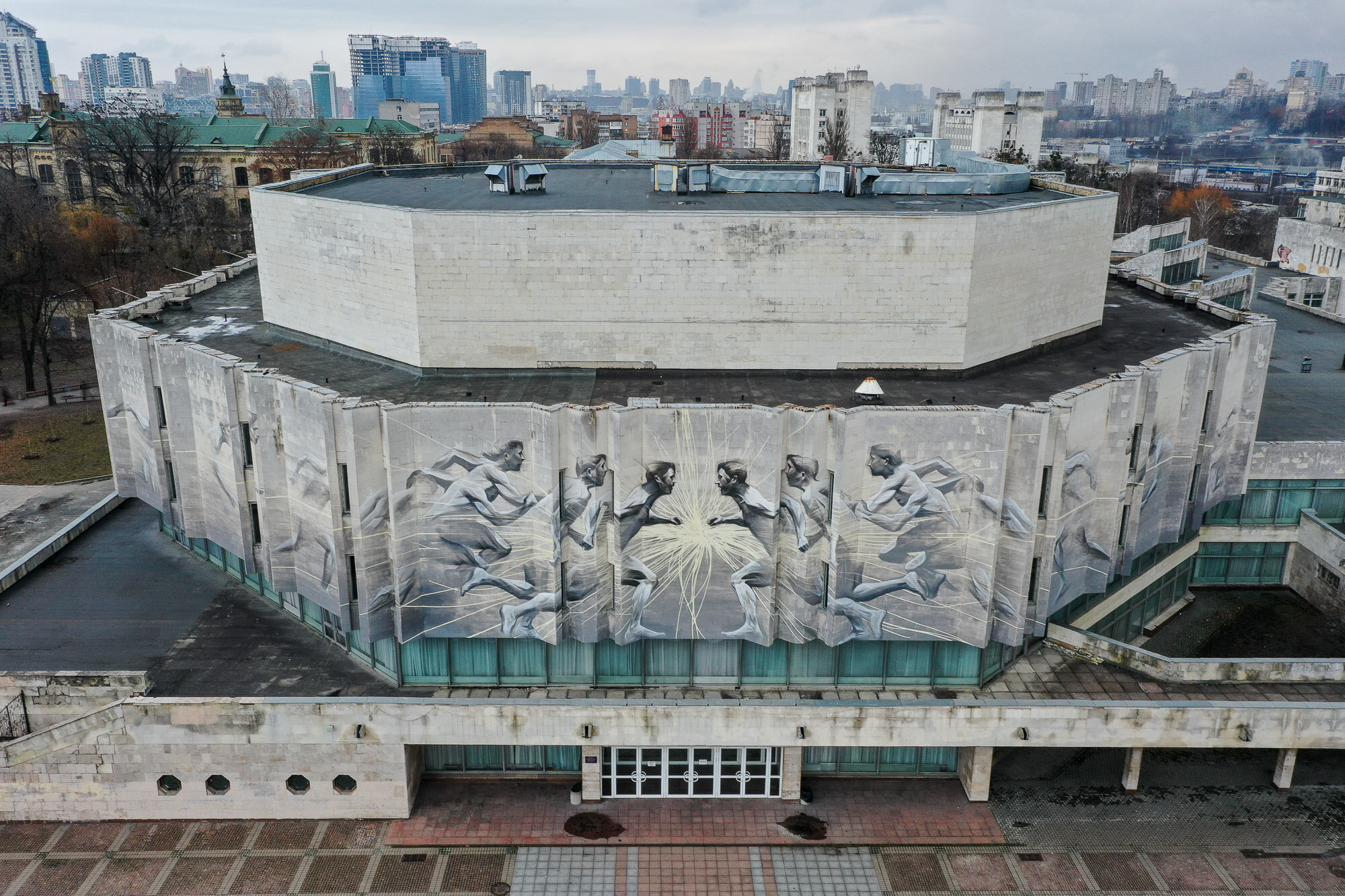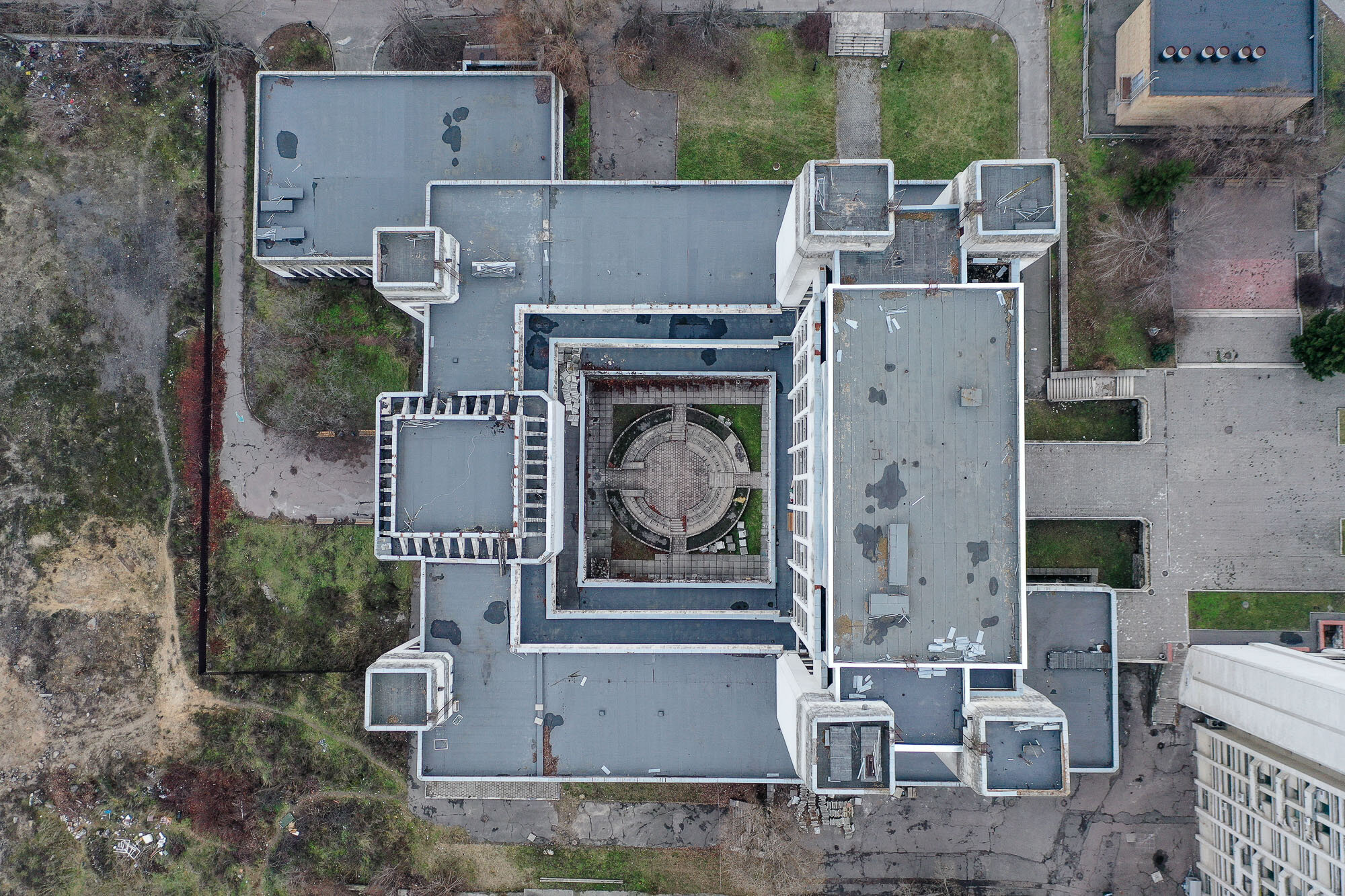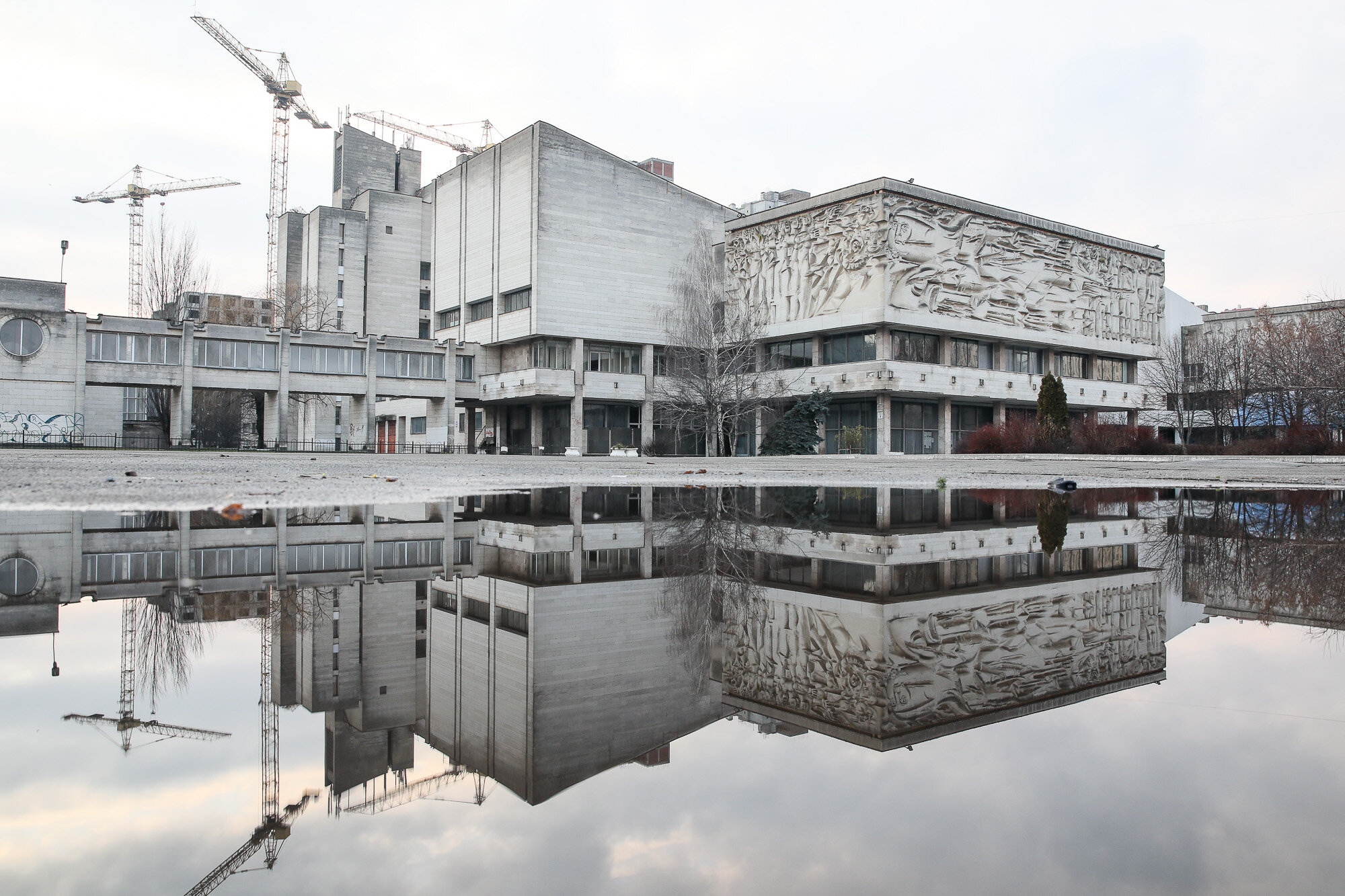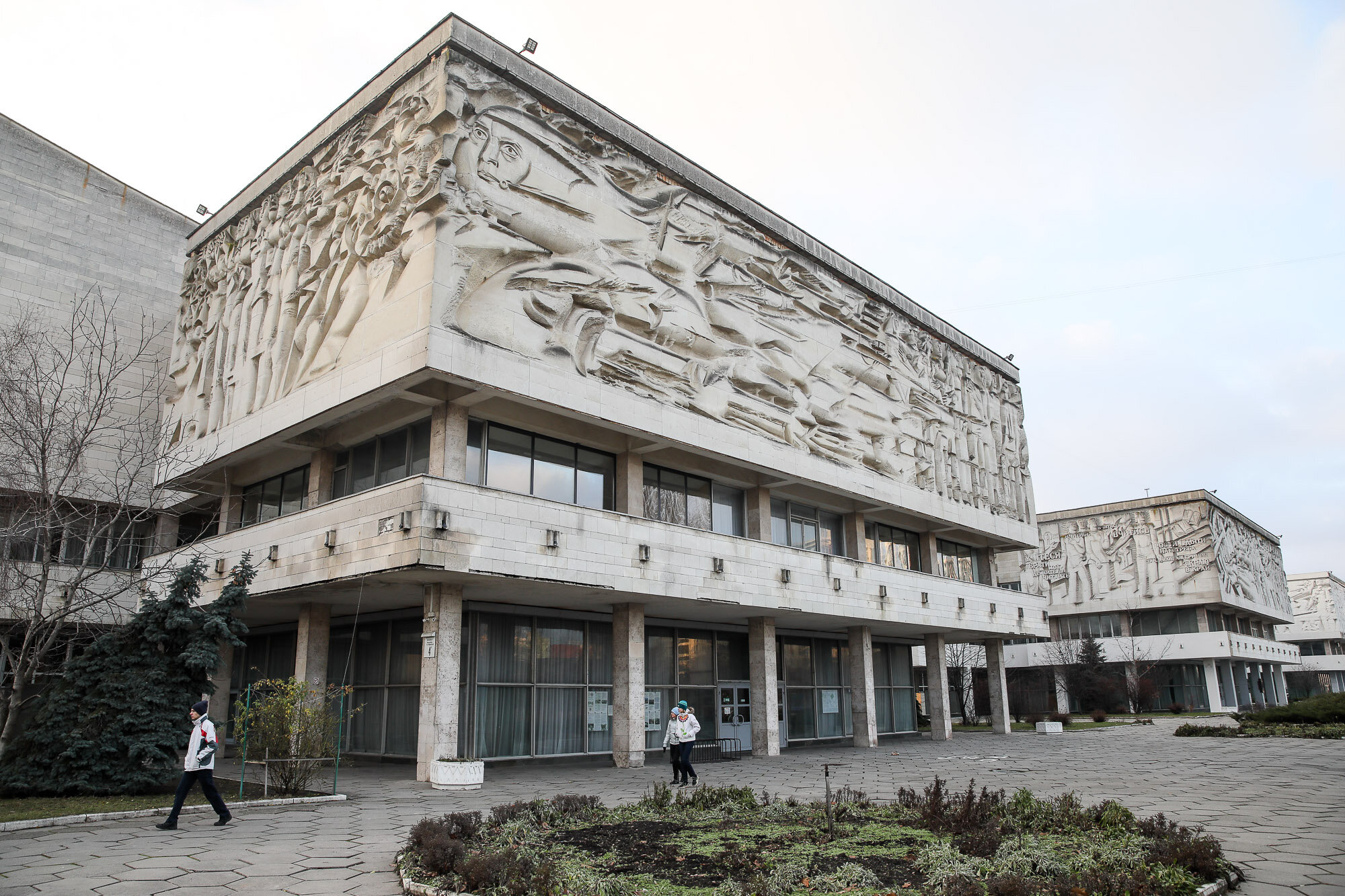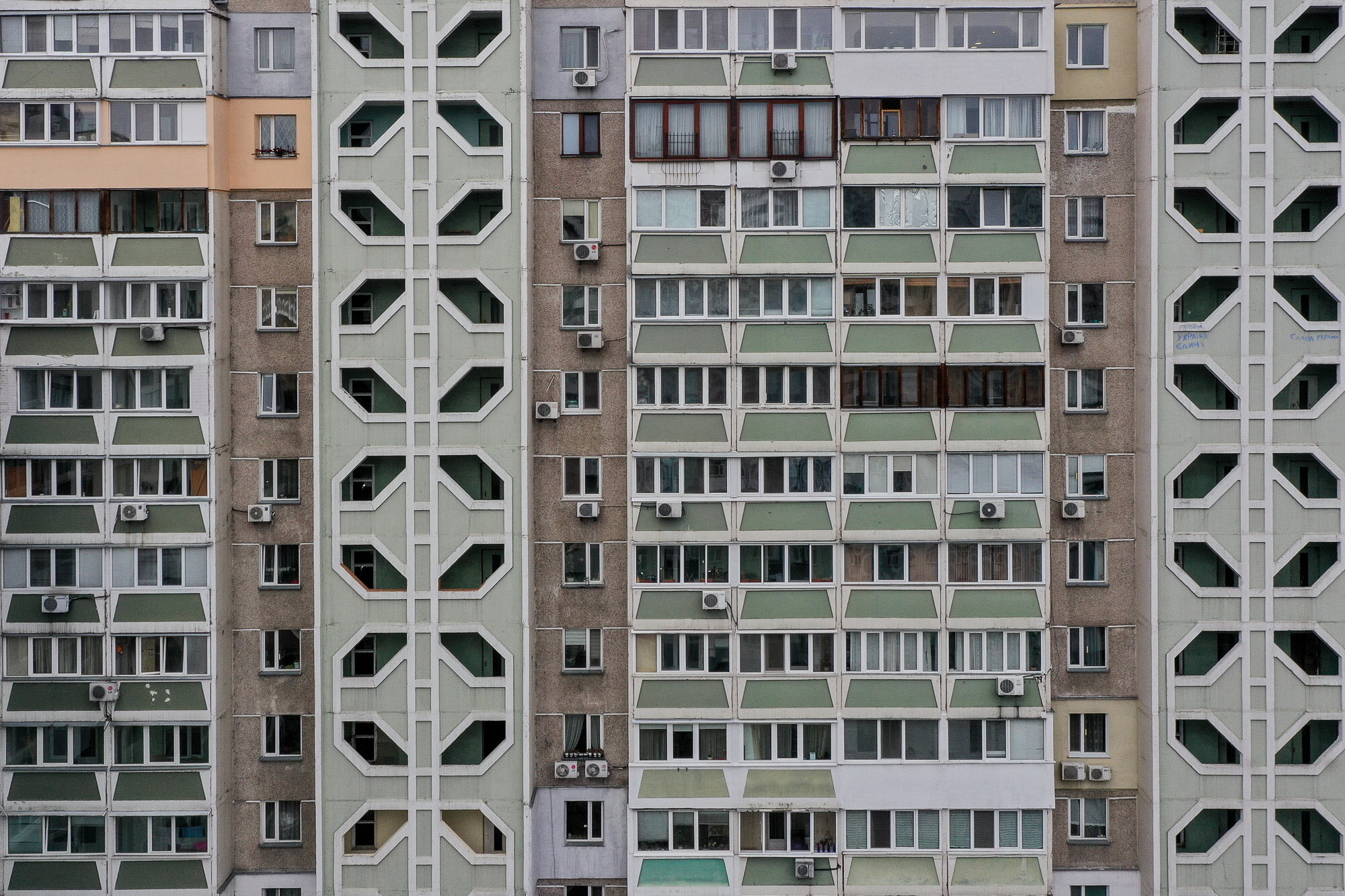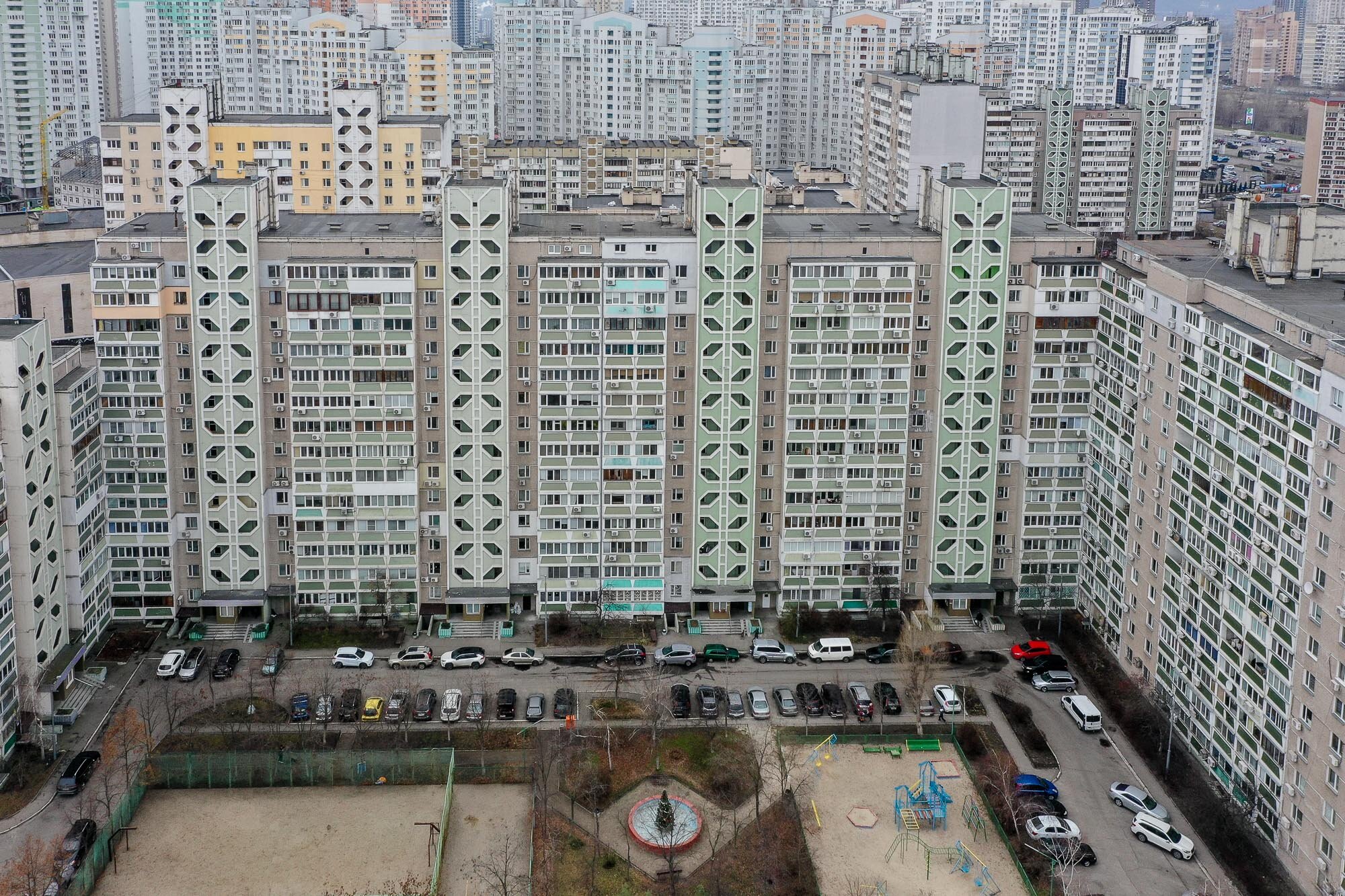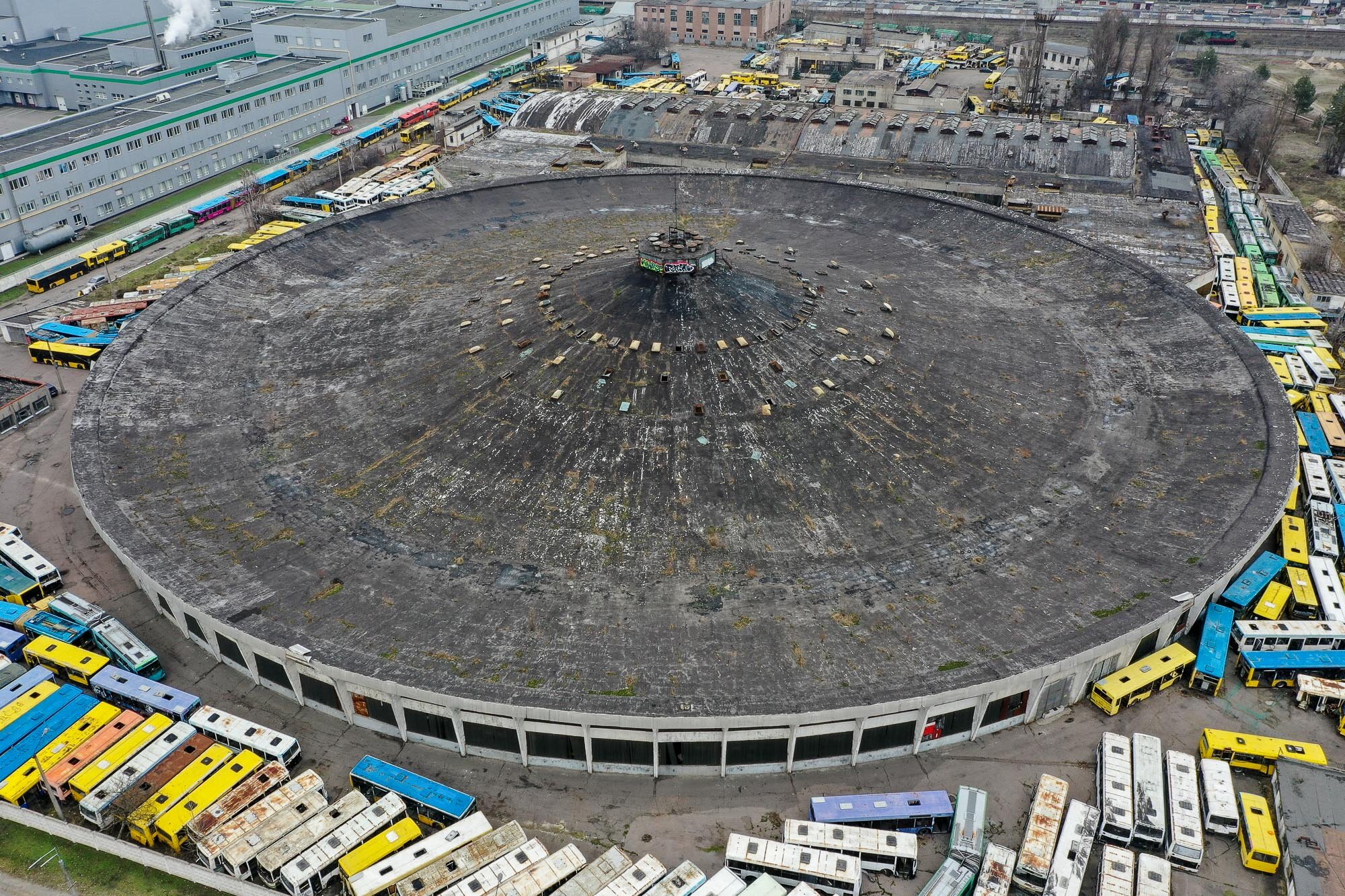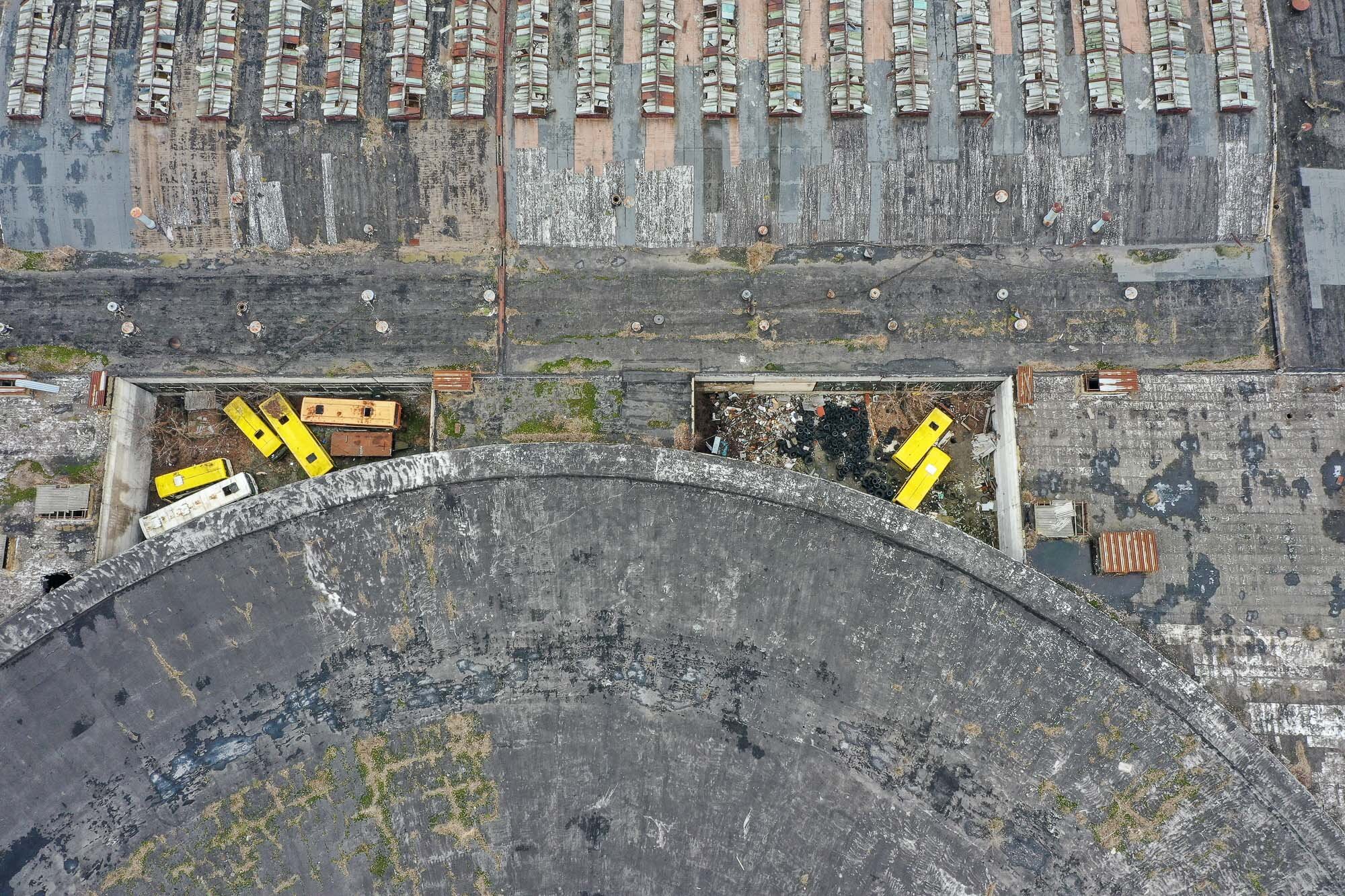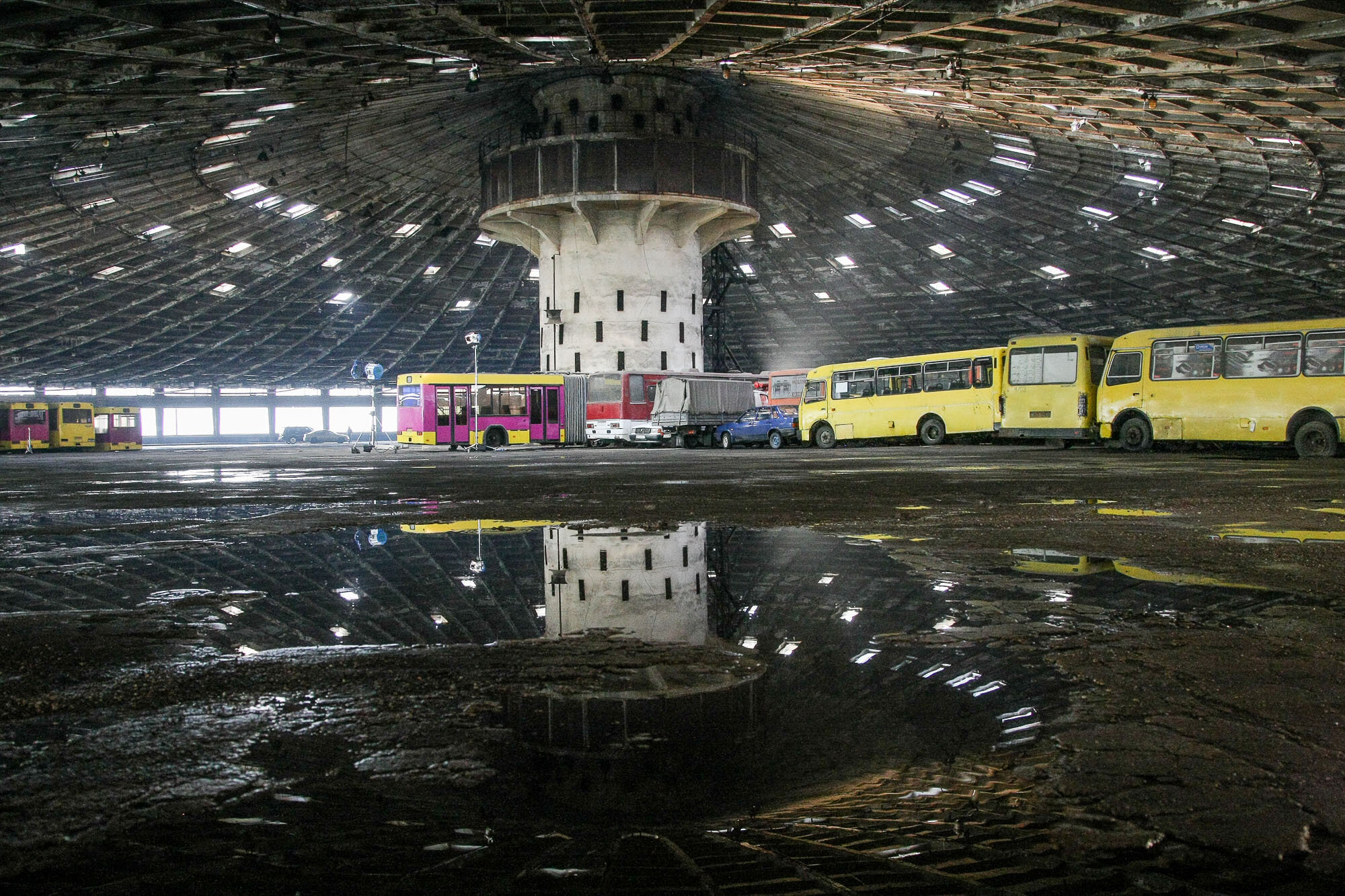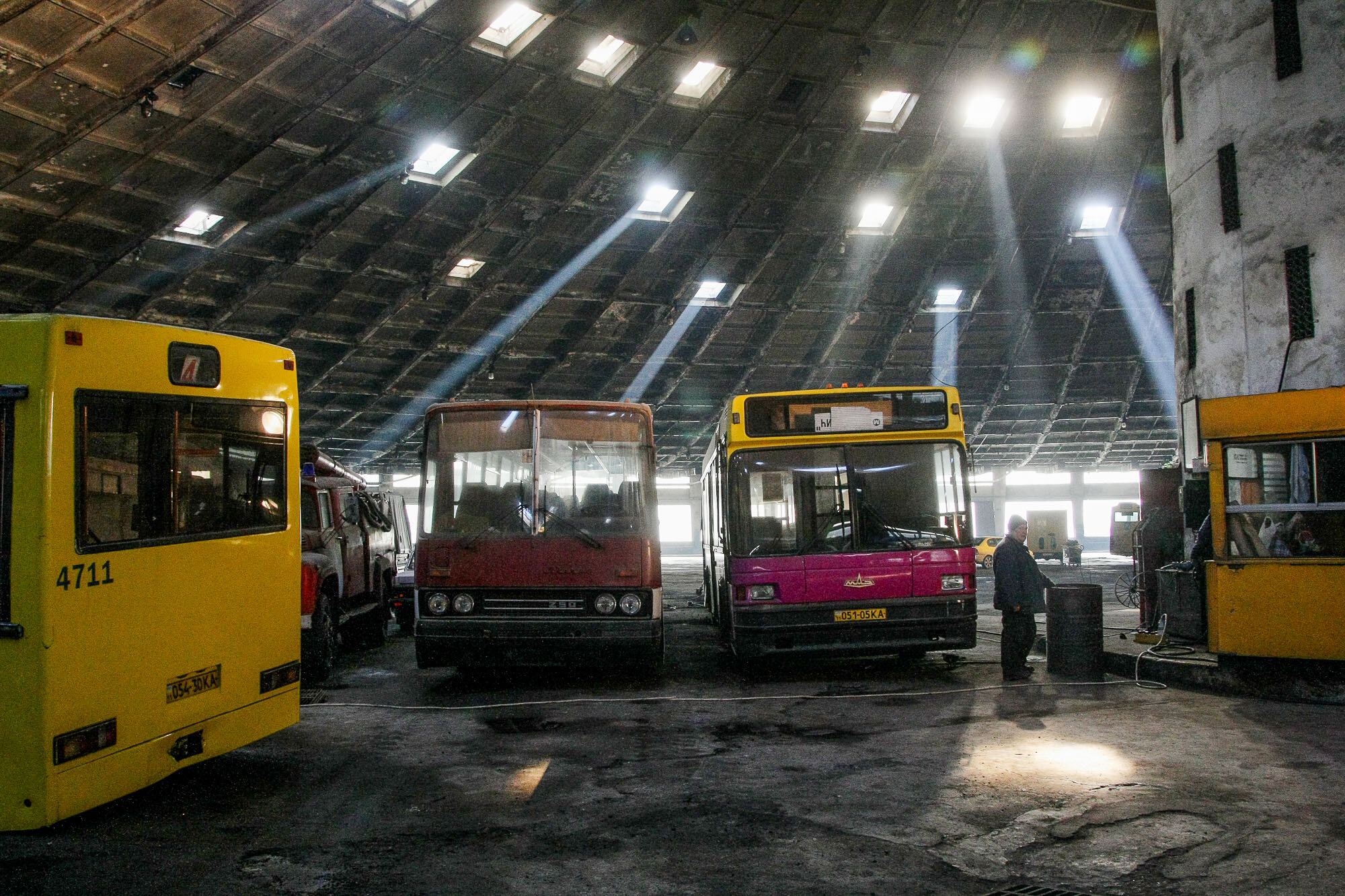Architectural Soviet modernism was an unlikely phenomenon. In a country where creativity was censored and restricted, bold experimental structures appeared against the odds.
The style was prominent between 1955 and 1991, replacing Stalinist architecture, which abandoned modernity for Gothic styles and Russian baroque to show foreign countries the prosperity of the Soviet Union.
JOIN US ON TELEGRAM
Follow our coverage of the war on the @Kyivpost_official.
But after Joseph Stalin’s death, the new ruler, Nikita Khrushchev condemned the amount of money spent on Stalinist buildings and demanded lower costs for new construction.
That was also the time when the Thaw started. Western architectural magazines made their way through the iron curtain and influenced local artists. An extraordinary genre emerged, combining imaginative ways of thinking with the essence of power.
Thirty years after the collapse of the Soviet Union, modernist buildings still stand in Kyiv as an essential part of the city’s diverse architectural identity.
The style’s aesthetic has risen in popularity in recent years far beyond post-Soviet countries. Modernist structures in Ukraine have become an attraction for a variety of film productions whether they be music videos, commercials or fashion campaigns.
But behind the structures’ polished images, a fight for their preservation is under way. With little state protection, some buildings decay while others are under threat of sloppy renovations or even destruction. Their fate has fallen on the shoulders of activists and the original architects themselves.
All the while, the striking modernist sites keep attracting tourists to Kyiv. Here are 12 of the best local structures worth visiting:
Flying Saucer
designed by: Florian Yuriev
1971
address: 180 Antonovycha St.
closest metro: Lybidska
To see the UFO that crashed into the Kyiv Institute of Information in 1971, turn left from Ocean Plaza mall after coming out of the Lybidska metro station.
Well, it wasn’t actually a UFO crash, but there was an intense space race between the Soviet Union and the United States that not only resulted in progress in space travel but also inspired Russian-born Ukrainian architect Florian Yuriev to come up with this design.
It’s easy to walk right under the structure that hovers 10 meters above the ground to appreciate its plain but extraordinary shape and size. The Flying Saucer was initially designed to be used by the KGB but eventually became a venue for events and concerts.
Arguably the most recognizable modernist building in Ukraine, the Saucer was almost swallowed by the expanding mall behind it. After years of activists fighting to protect the modernist building, the government added the Saucer to the registry of protected architectural landmarks, which the activists hope will keep the structure safe.
Kyiv Crematorium
designed by: Avraam Miletsky, Ada Rybachuk, Volodymyr Melnichenko
1968-1975
address: 16 Baikova St.
closest metro: Lybidska
At first glance, this looks like anything but a place for burning the dead. The structure might resemble the sand igloos on the planet Tatooine from “Star Wars” but it is in fact a fully functioning crematorium.
Planned out in 1960, the unexpected design owes much to the still-fresh memory of the Babyn Yar tragedy. In 1941, the Nazis murdered 34,000 Jews and burned their bodies in the Babyn Yar ravine. No one needed any visual reminders of burning the dead, so artists Ada Rybachuk and Volodymyr Melnichenko came up with what we see today, an eye-catching design that bears no association with its function, helping funeral participants cope and heal after the loss of a loved one.
The crematorium is located in the Memory Park at the back of Baikove Cemetery.
Hotel Salute
designed by: Avraam Miletsky, N. Slogotskaya, Vladimir Shevchenko
1982-1984
address: 11B Ivana Mazepy St.
closest metro: Arsenalna
Yet another striking modernist structure that sticks out against the 21st century Kyiv skyline is Hotel Salute. Dubbed “the grenade,” the strange round structure looks like it’s leaning over the crowd of pedestrians walking underneath. But the structure is safe and sound with no chance of toppling over, since the base of the hotel was initially designed to hold up a building more than twice as tall as the hotel that currently stands. Due to funding cuts, the skyscraper’s design was quite literally cut in half.
It’s easy to walk around the hotel’s parking lot to appreciate the jenga tower of round slabs from all angles and even go inside, as the hotel is fully functioning and ready to provide anyone with a room for their visit to Kyiv.
The easiest way to reach Hotel Salute is from the Arsenalna metro station, which takes about five minutes walking.
Arsenal plant
designed by: Mykola I. Lykholit
1764
address: 8 Moskovska St.
closest metro: Arsenalna
The Arsenal plant is one of Kyiv’s oldest and most famous factories. It was initially built in 1764 as a repair and production facility for the Imperial Russian Army. During the Cold War arms race, the plant developed dramatically, becoming an important manufacturer of military goods.
This tall structure is just a few-minute walk away from the world’s deepest metro station, Arsenalna. It’s hard to miss the structure’s towering wall above the surrounding one-story buildings. The large square wall is full of hive-like windows for the worker bees on the job.
Zhytniy market
designed by: Valentyn Shtolko, Olga Monina
1974-1980
address: 16 Verkhnii Val St.
closest metro: Kontraktova
The Zhytniy market in Podil district is probably one of the most legendary markets in Kyiv.
It is just a four-minute walk away from the Kontraktova metro station, right along Verkhnii Val Street. The building stands tall with a beautiful swooping roof that curves downwards, with intricate metalwork patterns welded into the walls supporting the large glass windows that allow natural light into the market. The vast open space inside the building is packed with vendors, who even spill out to the street outside.
The second floor consists of metal beams that jut out to meet the top portion of the ceiling, complementing the overall design of this modernist creation. The ceiling that curves inward is covered in hexagonal indentations. The view from the second-floor balcony overlooks the entirety of the market and all its subsections. Once a month, there is a flea market held on the second floor, which can be the perfect timing to combine architectural sightseeing with shopping and meeting people.
Constitutional Court
Architects: Yanosh Vig, Mykola Levandovsky
2001
address: 14 Zhylianska St.
closest metro: Olimpiiska
Just a three-minute walk away from the downtown metro station Olimpiiska is the Constitutional Court of Ukraine, a body making some of the country’s most important decisions inside its massive, chunky building. It’s contradictory architecture suits the court’s reputation history full of scandals. The top half might look like someone took part of the Hotel Bellagio in Las Vegas and slapped it right against the bottom half of the court’s building. Its main structure also resembles an open book.
Planned as a computer center, construction began in the 1980s but was not completed until 2001, a decade after the collapse of the Soviet Union.
Given the court’s outrageous decisions, the site is a regular spot for protests. Just across the street life buzzes near busy shops and restaurants.
Starovokzalna
designed by: unknown
1989
address: the end of Starovokzalna Street
closest metro: Vokzalna
Opened in 1989 as a tram stop, this modernist structure looks like someone put a moon base in the center of Kyiv. But instead of astronauts, it is full of vendors and people on their way to the new main train station, Vokzalna. The old building is at the end of the tram ring on Starovokzalna Street, where pedestrians can watch trams built in all sorts of decades roll by. The tracks and rickety noise add to the steampunk environment Starovokzalna presents.
There are more modernist designs in the back of the building that one can only really see if they stood on the train tracks themselves, but visitors can take a peek at the small footbridge that goes over the tracks on the way to the main train station.
The closest metro station is Vokzalna. But the easiest path may run through the center of Kyiv, passing the Kyiv Circus and Ukraina shopping mall, following the tracks like the yellow brick road.
Vernadsky National Library
designed by: Vadym Hopkalo, Vadym Hrechyna, Valeriy Peskovskiy.
1989
address: 3 Holosiivskyi Ave.
closest metro: Demiivska
The Vernadsky National Library is also one of Kyiv’s most recognizable modernist structures. It is the largest library in Ukraine in terms of volume and size, containing 15 million items.
The magnificent design of the exterior and interior architecture is very aesthetically pleasing. The structure can be seen in plenty of music videos including Korean boy band NCT U, British singer-songwriters Paolo Nutini and Paloma Faith.
The inside of the building contains a mural, “Earth’s Pain,” with bright psychedelic colors and an equally psychedelic plot, exploring science’s various ways to save life on Earth. The famous skylights throughout the building encompass everyone within its retro vibe. Even those who aren’t students using the reading hall to prepare for exams, can sit and take a moment to appreciate this grand library.
Igor Sikorsky Kyiv Polytechnic Institute
designed by: Volodymyr Lykhovodov, Viktor Sydorenko, Viktor Dovhalyuk, Oleksandr Dumchyk, Oleksandr Zykov, Oleksandr Kryuchkov
1988
address: 37 Peremohy Ave.
closest metro: Politekhnichnyi Instytut
Walking around the campus of the National Technical University of Ukraine “Igor Sikorsky Kyiv Polytechnic Institute” can take half a day. And it is well worth the time since there are several modernist buildings to see.
The ninth corpus of the institute resembles a fortress. The Culture and Arts Center entices with a huge mural portraying light and naked men running – a symbol of protons that move towards each other at high speed.
Not only can visitors enjoy walking around the outdoor campus, but they can look through the university’s library. The interior design of its premises is just spectacular – architect Volodymyr Lykhovodov included an impressive atrium, stairs and halls with moving cabinets. Volodymyr Pasyvenko’s murals can also be seen throughout the building.
Cybernetics Faculty, Taras Shevchenko National University of Kyiv
designed by: Mykhailo Budilovsky, Vadym Ladny, Volodymyr Kolomiets
1972-1980
address: 4D Akademika Hlushkova Ave.
closest metro: Vystavkovyi Tsentr
There may be several reasons to travel to the remote Vystavkovyi Tsentr metro station. There’s the beautiful large Holosiivskyi national park to walk through, the VDNH exhibition center where the Soviet Union used to show off inventions and products that has now transformed into a family entertainment spot and there’s the Cybernetics Faculty of Taras Shevchenko National University.
The most noticeable features include the four large Soviet murals that depict different stories. There’s a large hand holding a book, sickle and hammer, people gathering and pointing in various directions and a large face with a “big brother is watching you” kind of eye.
The way the architects integrated their art and presented the campus’ purpose, with a focus on mathematics, physics and cybernetics is present throughout. Carved equations and hieroglyphics fill the walls, murals and statues.
Exploring the whole campus feels like walking through a retro-futuristic 1980s movie set.
Pozniaky residential area
designed by: various architects
presumably 1990s
closest metro: Pozniaky
For those that like to explore non-touristy spots, walking through the Pozniaky residential area might fit that bill. Located on the left bank of the Dnipro River, it’s definitely more out of the way. But that extra effort will be rewarded with the various unique balconies seen on residential buildings. Some look like butterflies, others like space pods, and all of them come in different colors. The uniquely designed panels symmetrically stack on top of each other and stand out against the newer residential buildings that have crowded the area.
Bus Depot #7
designed by: Vladimir Zinkevic
1973
address: 15 Boryspilska St.
closest metro: Chervonyi Khutir
Out of all of the modernist locations on the list, this is the one for the most daring of travelers: Ukraine’s giant abandoned space-age saucer. This extraordinary bus depot can house up to 700 vehicles that now sit in this graveyard of automobiles. The engineering is impressive, with the disc-shaped structure being the only one of its kind in the Soviet Union. Known as the “circus,” the massive concrete roof is held by a single pillar in the center.
The bus station has been defunct since 2015, so there is no way to enter the actual building. Its interior can be seen in South Korean boy band NCT U’s 2018 music video, “Boss”.
The bus depot’s future seems dim. Today, its roof appears worn and neglected, with numerous trees growing straight through it. The buses inside are full of rust and rot.
As nature continues to reclaim the structure, the chances of it falling apart increase. This hidden relic that was once considered the most innovative structure of its kind might eventually cease to exist.
You can also highlight the text and press Ctrl + Enter


